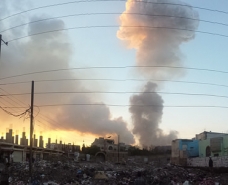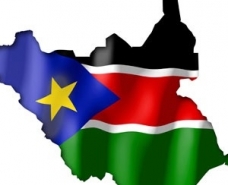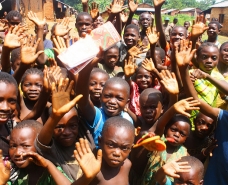Child Rights: Using international law and the UN
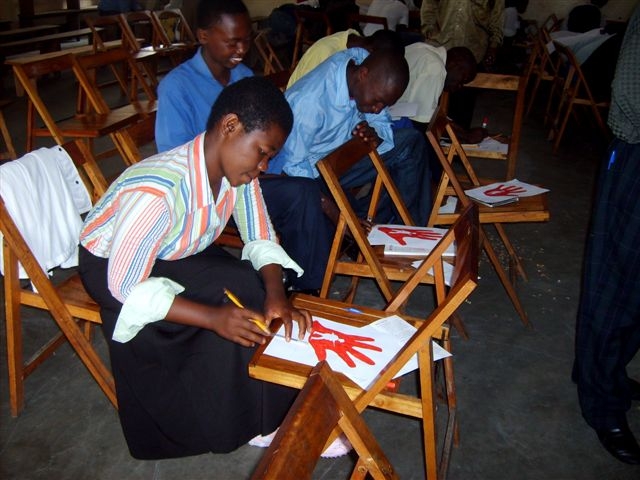
Ralf Willinger -
Human Rights organisations are increasingly using International law and the UN to draw public attention to human rights violations and to put pressure on the oppressors responsible. The civil peace movement can make use of these mechanisms for their purposes as well. One example at the level of international human rights law, is the UN Convention on the Rights of the Child; another is the UN Human Rights Council. In both cases there is a reporting mechanism to monitor states’ compliance with their obligations under the Convention and implementation of the respective rights in which the participation of civil society is explicitly provided for.
There are several articles in the UN Convention on the Rights of the Child concerning topics particularly relevant to the militarisation of youth, such as article 19 (protection from violence), article 29 (aims of education, among them education in the spirit of understanding, peace, tolerance), and the fundamental principle of the Convention enshrined in article 3: that the best interests of the child should be a priority in relation to other interests, including state interests such as recruiting young people for the national armed forces. In addition, the Optional Protocol to the UN Convention on the Rights of the Child on the involvement of children in armed conflict, which is now ratified by 150 states, determines how states need to protect children affected by war.
State Reporting Procedure for the UN Convention on the Rights of the Child
The 193 Treaty Parties of the UN Convention on the Rights of the Child (all states except for the United States and Somalia) have to report approximately every five years on their compliance with the obligations under the Convention and the Optional Protocols. For this purpose, they ought to hand in a so-called State Report, which is made public. Subsequently, civil society organisations (NGOs) and individuals have the opportunity to draft their own reports, documents or other information (for example, films), pointing at deficiencies in the State Report and in the state’s implementation of the Convention in general (so-called Shadow Reports or Alternative Reports).
The governments and the organisations involved will then be called for consultation meetings with the UN Committee of the Rights of the Child in Geneva, usually separately. There (or sometimes beforehand in writing) the Committee may request further data, case studies or other documents in order to gain a comprehensive view on the child rights situation in the respective country.
The UN Committee for the Rights of the Child is a body composed of independent, non-government experts from 18 different countries. These are often academics, NGO representatives or other child rights experts. In the final stage of the reporting procedure, the UN Committee drafts and publishes its Concluding Observations. These might be clear recommendations to the reporting state on specific ways to improve its implementation of child rights in the future. In the next round of reporting, approximately five years later, the state has to report on how it has implemented the specific recommendations given by the Committee.
Using the state reporting procedure to challenge the militarisation of youth (H2 this)
A concrete example of how NGOs can use the state reporting procedure to challenge the militarisation of youth is the Child Soldiers Shadow Report on Germany. The child rights organisation Terre des Hommes has, in cooperation with Kindernothilfe and other child rights and development organisations, published three of these Child Soldiers Shadow Reports: in 2007, 2011, and 2013. They were drafted by the jurist Hendrik Cremer and examine how Germany has complied with its obligations in relation to child soldiers under the Child Rights Convention and the Optional Protocol on the involvement of children in armed conflict. They were handed over to the UN Committee of the Rights of the Child in Geneva during the State Reporting Procedure for Germany.
In 2008, upon the finalisation of the last State Reporting Procedure on this Optional Protocol, the UN Committee advised Germany, amongst others, to raise the recruitment age for entry to the German armed forces to 18. Also, to improve the assistance and treatment of refugee children, and 'specifically prohibit the sale of arms when the final destination is a country where children are known to be - or may potentially be - recruited or used in hostilities.'[1]
Although the recommendations of the Committee as well as the Shadow Report Child Soldiers 2007 have been discussed several times in the German parliament and by the government, hardly any of the recommendations have yet been implemented. This is the reason why civil organisations continue to be active. The 2011 Shadow Report and the updated version of 2013 focus on three issues: the recruitment and promotion practices of the German national army targeted at minors (for instance, promotions in schools, youth media, fairs, and employment agencies), refugee children, and arms exports.
The oral consultations in the current State Reporting Procedure on Germany will have taken place during 2013, while the Concluding Observations of the Committee are expected to come out in early 2014. However, the points of criticism included in the Shadow Report, as well as the deficient German implementation of the recommendations of the UN Committee, will have already been widely discussed. Due to the fact that the Shadow Reports argue with international human rights law and recommendations of the UN and form part of the framework of the UN human rights system, they have a strong impact on both media and politics.
Furthermore, civil society protests against the insufficient situation of implementation, with campaigns such as Aktion Rote Hand (Red Hand Action), Schulfrei für die Bundeswehr (Armed Forces-free Schools), Jetzt erst Rechte für Flüchtlingskinder (Now more than ever: Rights for Refugee Children), and Aktion Aufschrei – Stoppt den Waffenhandel (Action Outcry – Stop the Arms Trade). The pressure on the German government to implement the recommendations of the UN Committee has thereby increased.[2]
Universal Periodic Review in the UN Human Rights Council (H2 this)
In the Universal Periodic Review procedure of the UN Human Rights Council there are similar options for civil society to be involved and express views. In this case, the relevant NGO can send reports directly to the Human Rights Council itself by emailing uprsubmissions@ohchr.org. The Member States of the Human Rights Council can bring up certain aspects of the points made, in the discussions of the Human Rights Council. This procedure similarly can exert pressure on the respective government and potentially result in an improvement of the human rights situation in that country.
The politics of military recruitment, conscientious objection to military service promotion, and the promotion of the military can all be addressed through both of these UN reporting procedures. They are effective mechanisms at both national and international level for political advocacy and increasing public pressure. An example of a major success in recent years is the raising of the minimum age of military recruitment in many states, including South Africa, Nepal, Italy, Spain, and Poland.
Notes
[1] UN Committee on the Rights of the Child, 'Concluding Observations: Germany,' 1 February 2008.
[2] Shadow Report Child Soldiers. http://www.kindersoldaten.info; Red Hand Day. http://www.redhandday.org; Action Outcry - Stop the Arms Trade. http://www.aktion-aufschrei.de; Campaign against Military Promotion in German schools (German only). http://www.schulfrei-fuer-die-bundeswehr.de; Campaign ‘Now more than ever – Rights for Refugee Children’ (German only). http://www.jetzterstrechte.de (all accessed February 2013).
Translated from the original German by Josephine Wragge and Ralf Willinger
Source: http://wri-irg.org
Countering Military Recruitment
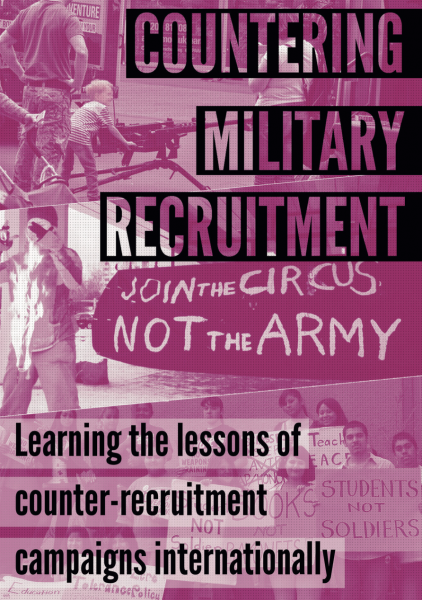
WRI's new booklet, Countering Military Recruitment: Learning the lessons of counter-recruitment campaigns internationally, is out now. The booklet includes examples of campaigning against youth militarisation across different countries with the contribution of grassroot activists.
You can order a paperback version here.


